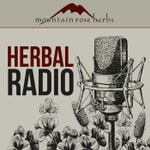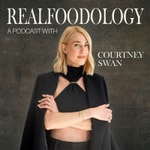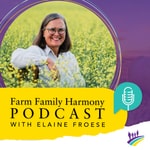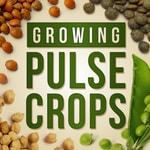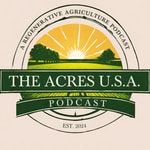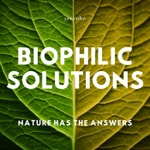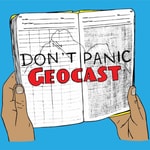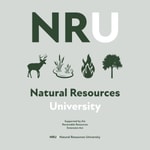Soil Health Labs – Détails, épisodes et analyse
Détails du podcast
Informations techniques et générales issues du flux RSS du podcast.

Soil Health Labs
Soil Health Labs
Fréquence : 1 épisode/31j. Total Éps: 85

Classements récents
Dernières positions dans les classements Apple Podcasts et Spotify.
Apple Podcasts
🇨🇦 Canada - naturalSciences
02/08/2025#90🇨🇦 Canada - naturalSciences
01/08/2025#80🇨🇦 Canada - naturalSciences
31/07/2025#72🇨🇦 Canada - naturalSciences
30/07/2025#59🇨🇦 Canada - naturalSciences
29/07/2025#46🇨🇦 Canada - naturalSciences
28/07/2025#29🇨🇦 Canada - naturalSciences
27/07/2025#21🇺🇸 États-Unis - naturalSciences
26/07/2025#93🇨🇦 Canada - naturalSciences
10/07/2025#96🇬🇧 Grande Bretagne - naturalSciences
10/07/2025#97
Spotify
Aucun classement récent disponible
Liens partagés entre épisodes et podcasts
Liens présents dans les descriptions d'épisodes et autres podcasts les utilisant également.
See all- https://www.ag-wx.com
20 partages
- https://sdgrass.org/grazing-school/
16 partages
- https://regenerativeagriculturepodcast.com/
13 partages
Qualité et score du flux RSS
Évaluation technique de la qualité et de la structure du flux RSS.
See allScore global : 59%
Historique des publications
Répartition mensuelle des publications d'épisodes au fil des années.
71 Tap into the Hidden Wisdom of Livestock to Restore Your Land with Renowned Ecologist Fred Provenza
Épisode 71
jeudi 29 août 2024 • Durée 43:04
In this episode of the SoilHealthLabs podcast series, Buz Kloot and Joe Dickie chat with Dr. Fred Provenza, professor emeritus of Behavioral Ecology at Utah State University, and author of several important books on animal behavior and land stewardship. Our discussion delves into the profound connections between healthy grasslands and healthy livestock, with Fred sharing personal stories and research that highlight the intricate relationships between soil, plants, animals, and humans.
Fred begins by recounting his early experiences working with Henry DeLuca, a rancher who started in the late 1800s. Henry’s deep understanding of his land and livestock left a lasting impression on Fred, particularly Henry’s practice of retaining his own replacement heifers to ensure they "knew the range." This experience shaped Fred’s lifelong exploration of the dynamic interplay between animals and their environments.
As the conversation progresses, Fred shares intriguing anecdotes about the mutual learning that occurs between livestock mothers and their young. He describes how a calf might explore and learn to eat a plant that the mother avoids, eventually leading the mother to try it as well. This two-way street of learning is crucial for the herd's adaptability and the health of the landscape.
The discussion also touches on the innovative methods used to train livestock, such as using a bitter, non-toxic substance to deter cows from nibbling on saplings. These stories illustrate how thoughtful, experience-based interventions can create sustainable practices that benefit both the animals and the environment.
The conversation then moved towards the wisdom of shepherds, contrasting their role with that of herders. Fred explains that while a herder might direct animals where to go, a shepherd observes and learns from the animals, allowing them to naturally select the plants they need. This approach not only supports animal health but also promotes the biodiversity of the landscape, which is essential for maintaining a healthy ecosystem.
Fred shares insights from his collaboration with French shepherds, particularly with co-author Michel Meuret (see additional resources below), highlighting how they use sequencing in grazing to optimize both animal and land health. By understanding which plants to graze first and in what order, shepherds can ensure that the landscape is utilized sustainably, preventing overgrazing and promoting a balanced ecosystem.
The conversation also explores the broader implications of reconnecting with our food systems. Fred reflects on the disconnect between modern agricultural practices and the land, using the example of Montana—a state rich in cattle but reliant on imported beef, and the talk he gave at Montana’s Old Salt Festival. This disconnect, he argues, has weakened our sense of community and our relationship with the land.
As the episode concludes, Fred emphasizes the importance of re-establishing these connections. The wisdom gained from shepherds and their relationship with the land and animals offers valuable lessons for how we approach our food systems today. This episode is a call to action, urging listeners to rediscover the value of experiential knowledge in maintaining the health of our ecosystems.
Additional Resources:
- Dr. Fred Provenza’s Talk at Utah State University: The Web of Life Event
- Dr. Fred Provenza’s Books:
- Nourishment: What Animals Can Teach Us about Rediscovering Our Nutritional Wisdom
- Foraging Behavior: Managing to Survive in a World of Change
- The Art & Science of Shepherding: Tapping the Wisdom of French Herders
- Old Salt Co-Op (Montana) website: https://www.oldsaltco-op.com/
- NY Times Article: Montana has more Cows than People: Why Are Locals Eating Beef from Brazil? https://www.nytimes.com/2024/06/13/business/montana-meat-old-salt-co-op.html
70 Dr. Dwayne Beck Shares No-Nonsense Tips for Boosting Land Health, Profitability and Resilience
Épisode 70
lundi 29 juillet 2024 • Durée 29:10
In this conversation with Soil Scientist Buz Kloot, Dwayne Beck— former research manager to Dakota Lakes Research Farm— discusses the destructive effects of some traditional land management techniques, one of which being tillage. Tillage consistently disrupts soil pore structure and leads to the loss of organic matter, initiating a downward spiral towards desertification. He references the Sahara Desert as an example, which was once a grassland but turned into a desert due to the loss of nutrients.
Beck highlights the importance of integrated farming practices that consider the land’s natural vegetation and climate. On his travels, particularly in Australia, he noticed significant differences in ecosystems based on rainfall patterns and soil water retention. He notes the challenge of farming in regions like Western and Eastern Australia, where the climate and soil conditions differ from grassland regions. He notes that in tree-dominated regions, water moves deep into the soil during winter, beyond the reach of grass-type crops. This creates a challenge under standard agricultural approaches; nutrients being in the soil, but too deep for crops to reach.
He shares his insights on potential solutions, such as integrating perennial crops like sorghum in summer to utilize the nutrient cycles effectively. Dwayne mentions Colin Seis, who developed a system called "pasture cropping" or "grain and graze," which integrates tall grass species and winter crops to create a mixed-species system that enhances nutrient cycling and works in tandem with the seasons. He highlights the benefits of having a mix of perennials and annuals, as it more closely resembles natural ecosystems—urging farmers to not grow dependent on perennial grains. While annual crops focus on producing seeds, perennials primarily aim to survive until the next year— noting that Seis’ ‘grain and graze’ approach, while an insightful guidepost, will not work in every climate.
Dwayne addresses the historical importance of megaherbivores in maintaining landscapes, and how the absence of these animals affects current ecosystems. The subsequent deficiency of deep-rooted species contributes to what he calls a leaky system: soil pH deficiencies leading to water and nutrient leakage. He references Randy Anderson's concept of a "death spiral," and emphasizes the need to restore the soil community to as close to its native condition as possible. This involves reintroducing diversity to rebuild soil’s capacity and productivity.
In a follow-up conversation with Kloot, Beck discusses ongoing challenges and potential solutions for farming in the Jim River region, specifically focusing on salinity issues. Dwayne emphasizes the importance of integrating perennials into farming systems to address these issues, noting that perennials could help manage salinity, although every property will have its own unique needs.
Beck highlights the benefits of having a mix of perennials and annuals, as it more closely resembles natural ecosystems. He notes how pH problems often stem from nutrient cycling deficiencies rather than input deficiencies, recounting an instance where he was asked in a conference how far a farmer would need to go to get lime. Beck’s answer was “Three feet.” He wants to remind farmers that lime is often in the soil, possibly beyond the reach of their standard crops, rather than miles away in a lime mine.
Beck expressed his concern about the increasing emphasis on bio-oil crops like canola, flax, and soybeans, warning that an over-reliance on these crops could exacerbate issues in the Corn Belt. He also mentions innovative uses for crop residues, such as making lumber from corn stalks, and suggests that tallgrass plants could be harvested biennially for biomass production while still benefiting the soil. He acknowledges that while this approach is not as beneficial as grazing, it is still better than many standard agricultural practices.
In all, Beck’s wealth of understanding on crop management and long-term planning underscores the need for strategic thinking in sustainable farming, and makes for an insightful conversation about regenerative land management.
Additional Links:
Dr Randy Anderson’s Spiral of Soil Regeneration:
Pasture Cropping with Colin Seis:
https://www.wool.com/on-farm-research/weather-the-drought-with-regenerative-agriculture/
Dakota Lakes Research Farm:
61 Agronomist Shares Top Strategies to Transform Saline Soils Into Productive Land
Épisode 60
mardi 16 avril 2024 • Durée 56:19
The conversation begins with Matt sharing a bit about his background, growing up on military bases in Germany and having ties to agriculture through his family's farming history. He then talks about his education and work experience in fisheries, water quality, and conservation, leading up to his current role as an agronomist at Ducks Unlimited. Matt also briefly mentions his personal experience with livestock and land management.
The podcast interview between Buz Kloot, Matt Hubers, and Joe Dickie delves into the pressing issue of salinity in agricultural systems, particularly in South Dakota. Matt Hubers, an agronomist at Ducks Unlimited, brings valuable expertise and insights into the discussion, drawing from his background in natural resource management and personal involvement in agriculture.
Matt discusses the historical and current factors contributing to salinity problems, such as changes in cropping practices and increased tillage. He highlights the detrimental effects of salinity on soil health and crop productivity, emphasizing the need for proactive measures to mitigate these issues. Matt suggests strategies like diversifying cropping systems, reducing tillage, and incorporating perennial grasses to address salinity and maintain soil cover.
The conversation also touches on the escalating salinity issues in specific regions, such as the James River Valley, and the importance of early diagnosis and intervention. Matt stresses the role of technical and financial assistance from organizations like Ducks Unlimited, emphasizing that now is the opportune time for farmers to seek help and implement solutions.
Joe Dickie raises questions about the broader implications of salinity issues and government assistance for non-farmers. Matt underscores the interconnectedness of agriculture with clean water, clean air, and healthy food, highlighting the benefits of supporting sustainable agricultural practices for all residents of South Dakota.
In summary, the interview underscores the urgency of addressing salinity problems, provides practical insights into mitigation strategies, and emphasizes the importance of collaborative efforts to sustain agriculture and preserve the state's landscape for future generations.
60 Soil Health Pioneer Dr. Dwayne Beck Shares His Groundbreaking Regenerative Ag Story
Épisode 59
jeudi 4 avril 2024 • Durée 35:06
Dwayne Beck is the Research Manager at Dakota Lakes Research Farm in Pierre, South Dakota. Soil Health Labs researcher Buz Kloot spoke with him in 2013 and again in 2023 about his journey at Dakota Lakes.
When Dakota Lakes Research Farm was first established by local farmers in the early 1980s, the aim was to address irrigation challenges exacerbated by rising energy costs. Dwayne Beck was a graduate student at the time studying irrigation research and ushered the farm toward emphasis on efficient water usage, not only in irrigated but also dryland areas. Over time, the farm's focus expanded beyond irrigation to encompass both dryland and irrigation research, its current goal being to identify, research, and demonstrate methods of strengthening and stabilizing the agriculture economy.
Over time, through the Dakota Lakes property, Beck expanded the regional pool of research on blossoming topics in regenerative agriculture: holistic no-till approaches, effective uses of irrigation, and the conditions necessary to bolster a native mixed-grass prairie ecosystem.
“Farmers are doing ‘no till’ in the US in some ways that don't make much sense, because there's no diversity and there's no attention to water cycles and nutrient cycles and sunlight, they’re just not doing tillage– basically just a conventional system with the tillage taken out.”
Now, ten years after first speaking to Beck, he has witnessed a local rebirth in small agricultural communities. There has been a noted increase in those working in fertilizer, cropping support businesses, and grain elevators, alongside a heightened understanding of the farmer’s power in soil health issues. Land value has increased, and with it, a broader understanding that healthy soils mean for a healthy community.
“How do you change the social moorings, so to speak, of a whole area? In the old days, if we had soil erosion happening, ditches filling with dirt-- which was common-- that was just seen as an act of God, something beyond the farmer’s control. And that part has changed.”
Beck hopes in the future to engage non-farming members and absentee landowners in issues of local agriculture. Particularly absentee landowners that rent local land don’t often have an intimate understanding of how the land is being managed— Beck would like to engage these landowners and invite them to express a vested interest in what’s happening on their land and within their soils.
Engage with Dakota Lakes’ Virtual Field day through the 2020 video series: https://www.youtube.com/playlist?list=PLTZDoxH1GkisubbRzKxg2XA_PIzzPE8PM
Get in touch with Dakota Lakes Research Farm through their website, http://www.dakotalakes.com/contact/ where there is also information on membership.
59 Soil Expert on the Origins and Impacts of Saline Soils
Épisode 59
mercredi 20 mars 2024 • Durée 37:38
In this, our first series on salinity, we talk to Kent Cooley, area resource scientist in Rapid City, SD. We discuss some of the causes of salinity in South Dakota, where it's estimated that 7.5 million acres of land are affected by saline soils, with almost a million more acres added in the past 10-15 years due to management practices. Kent helps is dive into the geology aspects of the region, explaining how the presence of an ancient inland sea and subsequent sedimentation left a high concentration of salts in the soil. We also look at the natural processes that contribute to the formation of saline and sodic soils, including the role of parent material, climate, and water movement. Natural salinity can occur due to the upward movement of water dissolving salts in the soil, which then accumulate on the surface as the water evaporates. This process is exacerbated by certain agricultural practices that incorporate high disturbance, and low diversity.
Our conversation also addresses the critical difference between saline and sodic soils, with sodic soils being particularly challenging to remediate due to their impact on soil structure and water infiltration. Kent stresses the importance of soil testing to accurately diagnose the condition affecting the soil, which in turn informs the appropriate remediation strategies.
We briefly touch on remediation (the subject of future podcasts) and these include diversifying crop rotations, adopting no-till farming practices, and perennial systems to make better use of soil moisture and keep salts deeper in the soil profile. The podcast underscores the significance of managing the recharge areas (upslope of the salinity area) to prevent the movement of salts to the surface in lower areas. Additionally, Kent touches on the challenges and potential solutions for managing salinity in irrigation districts, where the use of water with moderate to high salt content can further exacerbate soil salinity issues.
Kent emphasizes the need to be proactive and taking a comprehensive approach to addressing salinity including soil testing, appropriate residue management, crop selection, and the adoption of farming practices that preserve soil health and prevent the accumulation of salts in the soil profile.
58 How One Grassland Initiative is Leveraging Landowners and Scientists to Ignite Profound Real-World Change
Épisode 58
mercredi 6 mars 2024 • Durée 46:25
Laura Kahler is the director of the South Dakota Grasslands Initiative (SDGI), pushing South Dakotan agriculture toward sustainability and heightened reverence for the natural landscape. Laura's mission is to provide resources and support to landowners, helping them keep their pasture lands not just profitable, but also sustainable and ecologically sound.
The SDGI aims to manage grasslands effectively while balancing profitability and environmental conservation. Grasslands are more than just land; they are ecosystems that require attentive, informed management to thrive. Laura emphasizes that the initiative is more than a conservation effort; it's a collaborative platform where hunters, ranchers, conservation groups, and others converge to share perspectives and solutions.
A key aspect of SDGI's approach is the integration of local knowledge with scientific research. Farmers and landowners bring generations of experience, while scientific insights offer new perspectives on soil health and ecosystem management. This blend of knowledge is crucial for developing effective, sustainable land management strategies.
Education forms the backbone of the SDGI. By educating landowners and the public about the importance of soil health and sustainable practices, the initiative aims to create a ripple effect, one that spreads awareness and action across communities. This educational component is vital in cultivating a shared understanding and commitment to land stewardship.
At its heart, the success of the SDGI hinges on collaboration. By bringing together diverse groups, each with their own perspectives and interests, the initiative fosters a sense of community and shared purpose. This collaborative spirit is essential for addressing complex environmental challenges.
The real-world impact of the SDGI and regenerative practices is profound. Farmers report healthier soils, increased biodiversity, and improved yields. Environmentally, these practices contribute to carbon sequestration, water retention, and habitat preservation - essential components in the fight against climate change.
Looking ahead, Kahler intends to continue expanding the initiative, deepening the understanding of regenerative practices, and fostering a community where every stakeholder has a voice in shaping the future of our grasslands.
The South Dakota Grasslands Initiative stands as a testament to what can be achieved through collaboration and a deep commitment to our planet. Regenerative practices and collaborative effort not only impact today’s soils, but have ripple effects into plant, animal and human life for years to come.
Links:
SD Grasslands Initiative Homepage: https://sdgrassinitiative.org/
SDGI Summit and Introduction Video: https://www.youtube.com/watch?v=ikpzs8sA4xU
New Feature Video: https://www.youtube.com/watch?v=gAoqp0cYwPc
57 Preserving America's Grasslands: Insights from Tate Lantz on The Central Grasslands Roadmap
Épisode 57
mercredi 28 février 2024 • Durée 51:48
In this insightful episode, Tate Lantz joins hosts Joe Dickie and Buz Kloot to discuss the Central Grasslands Roadmap. Lantz shares his personal journey from a childhood on a South Dakota cattle ranch to his current role in conservation, reflecting a deep connection to the grasslands.
Tate grew up on a cattle ranch near Winner, SD and after high school attended SDSU majoring in range science. His career began at the Conservation District in Kingsbury County, after which he joined the NRCS in 1998 and currently serves as Assistant State Conservationist for field operations in Rapid City, SD since 2016. Lantz first got involved in the grasslands roadmap mission when the operation was temporarily housed in the Sturgis field office where he was positioned. He was immediately drawn into the aim: to combine the efforts of three countries and eight sectors to save one of the most vital ecosystems on earth- the grasslands. Grasslands face threats from urban sprawl, agricultural conversion, and tree encroachment, leading to grassland loss (32 million acres since 2012) as well as significant biodiversity loss.
The Roadmap aims to raise awareness of grasslands' value in carbon sequestration and climate mitigation. To do this, the Roadmap emphasizes community involvement, including indigenous voices and industry partnerships. The Roadmap highlights the interconnection between grassland health and economic resilience of rural communities. It aims to bolster collective understanding and action, influence and push forward impactful legislation, heighten efficiency of resource use and allocation, refine shared progress monitoring standards and construct sustainability models to support scaling programs in grazing, regenerative agriculture, and industry. Tate Lantz's conversation sheds light on the Central Grasslands Roadmap's importance in preserving one of America’s most vital ecosystems. Stay tuned for more discussions on grassland conservation and the roadmap's impact across North America.
Useful Links:
Central Grasslands Roadmap Home page: https://www.grasslandsroadmap.org/
Our recommendation for understanding the roadmap:
Roadmap Executive Summary New Feature Video on Grasslands loss and reclamation: Two Regenerative Ranchers Share Shocking Soil Health Discovery (growingresiliencesd.com/videos)
Other Notes on the Central Grasslands Roadmap:
History: 2018- Bird Conservancy of the Rockies (backbone organization) – Tammy VerCauteren’s (exec director of BCoR) vision.
Need/Context: 50 million acres (size of SD?) lost in last 10 years? “Measures of human community health and healthy grassland ecosystems across the biome continue to decline. The time to act is now.”
Scale: Mexico, US and Canada, 600 million acres, eight sectors (e.g., indigenous communities, landowners & ranchers federal agencies, industry/ag and private sector, state and provincial agencies, NGO’s, academia, foundations and funders). Diverse ecosystems and diverse communities What is the Central Grasslands Roadmap? A hub for information and connection across countries and sectors - “We must think, collaborate, and act differently.”
Vision: Eight outcomes – all look like related to thriving economic, environmental and equity (3 tectonic plates of sustainability) outcomes for these communities, beginning with indigenous populations, but includes ranchers/landowners, NGOs policymakers..
Principles: Respect, priorities to sustain indigenous communities, ranching and rual communities, science priorities, eight sectors.
56 How Dr. Liz and Rick Haney are Reshaping Soil Tests and the Agricultural World by Following Nature's Blueprint
Épisode 55
mercredi 6 décembre 2023 • Durée 47:07
55 Gabe Brown Shares How Regenerative Agriculture is Breathing New Life into Farms, Soils and Society
Épisode 53
mercredi 1 novembre 2023 • Durée 59:30
54 How to Structure a Win-Win Grazing Lease for Land and Livestock Owners
Épisode 49
mardi 19 septembre 2023 • Durée 58:22
